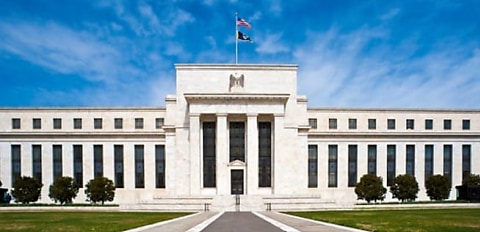The Federal Open Market Committee (FOMC) has moved to cut their rates by a larger-than-expected 50 bps to a 4.75–5 per cent range.
The FOMC said following the cut that recent indicators suggested that “economic activity has continued to expand at a solid pace”.
“Job gains have slowed, and the unemployment rate has moved up but remains low. Inflation has made further progress toward the Committee’s 2 per cent objective but remains somewhat elevated,” it said.
Fed chair Jerome Powell said that the 50-bp cut reflected its “growing confidence that with an appropriate recalibration of our policy stance, strength in the labour market can be maintained in a context of moderate growth and inflation moving sustainably to 2 per cent”.
The FOMC further projected another 50-bp cuts by the end of the year over two meetings, followed by another 100-bp cuts in 2025 with one final 50-bp cut in 2026 to leave the Fed funds at 2.9 per cent.
The question now remains on how this supersized rate cut will influence the Reserve Bank of Australia’s (RBA) decisions moving forward towards the end of 2024.
With the RBA’s next meeting set to occur early next week (23–24 September), expectations for a hold seem unanimous among economic commentators and members of the broking industry.
Home Loan Experts senior mortgage broker Jonathan Preston said that a hike would “be a shock to the market” and the central bank “still probably would need more data that inflation is cooling down to make a cut”.
Although we’ve seen rate cuts from the Fed and other central banks around the globe, Preston said the impact of those moves would take longer to hit the RBA.
“The market is aware that the US Federal Reserve cut its rate by 50 basis points,” Preston said.
“This won’t change things in Australia immediately but it might signal the start of a cycle of rate cuts. Already, the European Central Bank, Bank of Canada, and the People’s Bank of China have cut rates.”
On the other hand, Bell Partners Finance managing director Mark Stevenson said that the Melbourne Cup Day in November is “shaping as the best bet for a long-awaited reduction” in interest rates.
“The RBA has been under pressure to reduce rates after its last rate movement was a 25 basis points increase on Melbourne Cup Day last November, which lifted the official rate to its current level of 4.35 per cent,” he said.
“The previous year also saw the RBA lift its cash rate 25 basis points on Cup Day, but it reduced rates on Cup Day in 2020 during the COVID-19 pandemic when official rates plunged to an all-time low of 0.1 per cent.
“Although the central bank did discuss a rate hike at its August meeting, it’s more likely to cut if it does decide to take action with inflationary pressures easing.”
ANZ economists Catherine Birch and Adam Boyton, along with senior rates strategist Jack Chambers, believe that the Fed’s decision will not directly influence the RBA’s decision.
“In her Anika Foundation speech two weeks ago, RBA Governor, Michele Bullock, emphasised that the key to achieving the full employment part of the RBA’s mandate is achieving price stability),” they said.
“This could be read as drawing a distinction on where the RBA sits on its path towards achieving its mandate (inflation still too high) relative to the Fed (inflation low enough that its focus has shifted to the labour market).”
Indeed, RBA governor Michele Bullock has gone to great pains since the August monetary policy meeting to dispel any chatter around the central bank cutting interest rates in the “near-term” (over the next six months) and doubled down on the RBA’s decisions to lift interest rates during the aforementioned Anika Foundation speech.
Bullock said that ingrained high inflation could significantly increase the risk of a recession in Australia and that if inflation expectations lead to rising prices and wages, it would worsen inflationary pressures and necessitate even higher interest rates to mitigate.
“If high inflation becomes entrenched in the expectations of firms and households, it would be more difficult and costly to reduce,” Bullock said.
“If businesses and workers come to expect that prices and wages will continue rising quickly, this adds to inflationary pressures, requiring even higher interest rates to bring inflation down.
“Ultimately, we would need to slow the economy down by more, which would result in a larger rise in unemployment and higher risk of recession.”
[RELATED: High interest rates are ‘necessary’]

